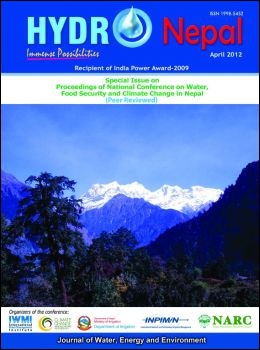Rice: Water, Food Security and Climate Change in Nepal
DOI:
https://doi.org/10.3126/hn.v11i1.7217Keywords:
Rice, stresses, food security, climate change, NepalAbstract
Rice is the staple food for more than 50% of the world’s population, and more than 90% rice is produced and consumed in Asian countries (IRRI.org). In Nepal, both the national economy and food security depend on rice production. Theoretically, about 5,000 liters of water are required to produce one kilogram of paddy (IRRI.org). Now, water is becoming a scarce resource in the world because of global warming. Extreme weather and erratic rainfall are becoming common phenomena. One degree Celsius increase in nighttime temperature decreases rice production by 10% (IRRI.org). Food security, nutrition security, profitability and ustainability are the major issues. Stress-tolerant rice varieties (i.e., from the stress of flood, drought, heat, cold, pests, soil fertility degradation, etc.) and crop management technologies are generated by research. Irrigated rice is the major contributor of methane gas emissions. Thus, direct seeded rice helps to reduce methane emissions. Resource conservation technologies/conservation agriculture are some of the ways for reducing methane emissions and encouraging carbon sequestration. World rice scientists are engaged in C4 Rice Project and, if successful, 50% more rice production will be possible with less water and fertilizer.
DOI: http://dx.doi.org/10.3126/hn.v11i1.7217
Hydro Nepal Special Issue: Conference Proceedings 2012 pp.78-80
Downloads
Downloads
Published
How to Cite
Issue
Section
License
The copyright of the articles and papers published is held by HYDRO Nepal Journal.
The views and interpretation in this journal are those of author(s), and HYDRO Nepal does not bear any responsibility for the views expressed by authors in the journal.




